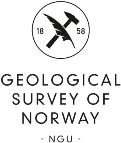
(Last updated: 12.06.2025)

|
Norsk versjon | ||||
| THE INDUSTRIAL MINERAL DATABASE | |||||
| Occurence 4012 - 306 Isnes 1 | |||||
| (Object Id: 8432) (Last updated: 12.06.2025) |
|||||
|
|
| Location |
| County: | Telemark | Municipality: | Bamble (4012) |
| Map 1:50000: | Kragerø (1712-4) | Map 1:250000: | Arendal |
| Coordinate system: | EU89-UTM Zone 32 |
| East: | 531685 m. | North: | 6532396 m. |
| Longitude: | 9.5504000 | Latitude: | 58.9300800 |
| Show on map |
|
|
| Resource |
| Resource Type: | Feldspar | Resource Subtype: | Pegmatitic feldspar |
| Importance |
| Raw material meaning: | Not Assessed (reg. 18.02.2015) |
| Resources and production |
| Activity: | Mining | Reserves: | ||
| Operating method: | Open pit mining | Historical production: |
Products |
| Element/product | Crude ore grade or quality | Reg. date | |
| Pegmatitic feldspar | % | 15.10.2024 |
Mineralization |
| Genesis: | Form: | |||
| Main texture: | Min. distribution: |
| Main grain size: |
| Strike/Dip: | Direction: | |||
| Plunge: |
| Stratigraphic classification of host rock |
| Era: | Period: |
| Province: | ||
| Geotec.unit: | ||
| Tectonic complex: | ||
| Igneous complex: |
| Group: | Formation: |
Information(s) in free text format |
| Free text |
| Beliggenhet: N58.93008°, Ø9.55040°. På østsiden av Isnestangen, umiddelbart bak et sommerhus, ca. 25 m fra sjøen. Geologiske forhold: Pegmatitten danner en svakt skråttliggende linse med utgående i en bratt fjellvegg mot øst. Den følger hovedsakelig strøket og det sydvestlige, moderate fallet av den omgivende amfibolitt/metagabbro. Pegmatittlinsen kan følges ca. 50-60 m i terrenget og er 7-8 m på det mektigste, hvor bruddet er anlagt, men kiler ut mot nord. Forekomsten ble beskrevet av Andersen (1931, s. 10-11). Mineraler: Pegmatitten er finkornet til middelskornet og inneholder rødlig kalifeltspat i inntil ½ m store individer, litt plagioklas, kvarts, samt små mengder turmalin, biotitt og muskovitt. Stedvis i pegmatitten opptrer lys rustbrune aggregater av finfibrig sillimanitt opptil flere centimeter i diameter. Tynne, sendannede sprekker er fylt av kalsitt. Arbeid og historie: Bruddkanten langs den nordøstre brattkanten av kollen er ca. 30 m langt og inntil 7 m høy. Andersen (1931) nevner at bruddet hadde produsert adskillig feltspat, vesentlig kvartsholdig 2. sort, og var i drift på 1920-tallet. |
Bibliography: |
| From NGU's Reference Archive: |
| Andersen, Olaf , 1931 |
| Feltspat II. Forekomster i fylkene Buskerud og Telemark, i flere herreder i Aust-Agder og i Hidra i Vest-Agder. |
| ;Norges geologiske undersøkelse;TIDSSKRIFTARTIKKEL;NGU; No.128B;1-109 pages |
| Abstract: | |
| Summary s. 151. Feldspar deposits in Southern Norway. (Feltspat II by Olaf Andersen and Feltspat III by Tom F.W. Barth) A few years ago one of the writers published a general outline of the properties, mode of occurrence, exploitation and uses of feldspar with special reference to the Norwegian feldspar industry (Olaf Anderesn, Feltspat I, Norges geologiske undersøkelse, Nr. 128A, 1926). To that publication the reader is referred for general in- formation regarding the feldspar industry of Norway. In the present publi- cation brief descriptions are given of 262 individual feldspar deoposits, all situated in the part of Southern Norway that extends, generally in a rather narrow zone, along the coast westward from the neighbourhood of Kragerø to the island Hidra near Flekkefjord. The deposita described lie in the counties Buskerud, Telemark, Aust-Agder and Vest-Agder, and are distributed over a large number of local districts (herreder). The most important districts at present are those in the neighbourhood of Kragerø ((Bamble, Skåtøy and Sannidal), those along the coast between Risør and Arendal (especially Søndeled, Holt and Froland), and the two districts north of Kristiansand (Iveland and Evje). Each description contains information about the dimensions and general attitude of the pagmatite body and the feldspar. |
| Andersen, Olaf , 1926 |
| Feltspat I. Feltspatmineralenes egenskaper, forekomst og praktiske utnyttelse med særlig henblikk på den norske feltspatindustri. |
| ;Norges geologiske undersøkelse;TIDSSKRIFTARTIKKEL;NGU; No.128A;1-142 pages |
| Abstract: | |
| The present publication is a description, in non-technical language, of the properties, geological mode of occurrences, exploitation, and uses of feldspar with special reference to the Norwegian feldspar industry. Systematic descriptions of commercial deposits are reserved for a future publication to be issued as no. 128b of the present series. Chapter 1 contains a general description of the mineralogical, chemical, and physical properties of the various species of the feldspar group. - Table I gives the theoretical chemical composition of mixture of potash feldspar and soda feldspar for intervals of 10 pct. by weight. - Table 2 gives the corresponding figures for mixtures of soda feldspar and lime feldspar. - Table 3 contains a few examples of chemical analyses of feldspar from Norwegian occurrences. The analyses, of which No.s 1-5 are new, represent selected, "pure" feldspar. No.s 1, 2 and 3 are commercial "potash feldspars" from granite pegmatites, No. 4 a soda-potash feldspar from syenite pegmatite, and No. 5 a soda feldspar of commercial quality from a pyroxene bearing granite pegmatite. No.s 6 and 7 are old analyses respectively of oligoclase from granite pegmatite and labradorite from anorthosite. - Table 4 contains multiplication factors for the recalculation of feldspar analyses. |
| The fact sheet was created on 06.01.2026 |
| Questions or comments regarding the fact sheet can be emailed to: ressursdatabaser@ngu.no |
| Copyright © 2026 Geological Survey of Norway |